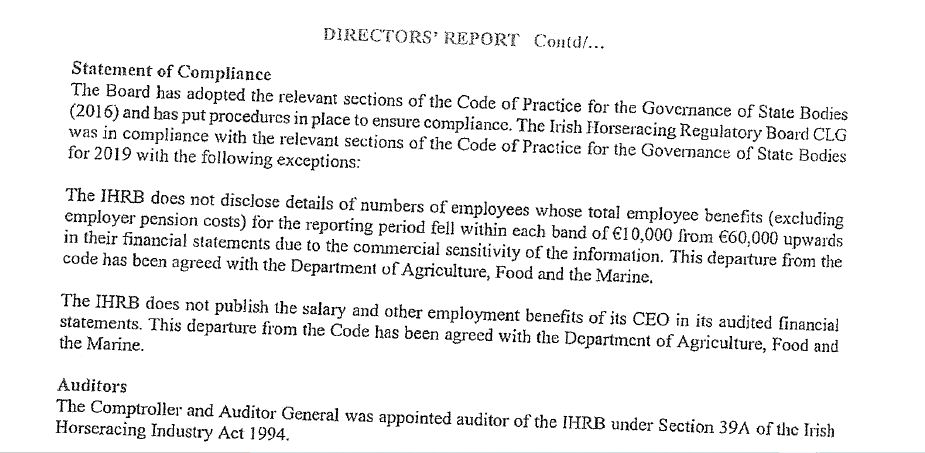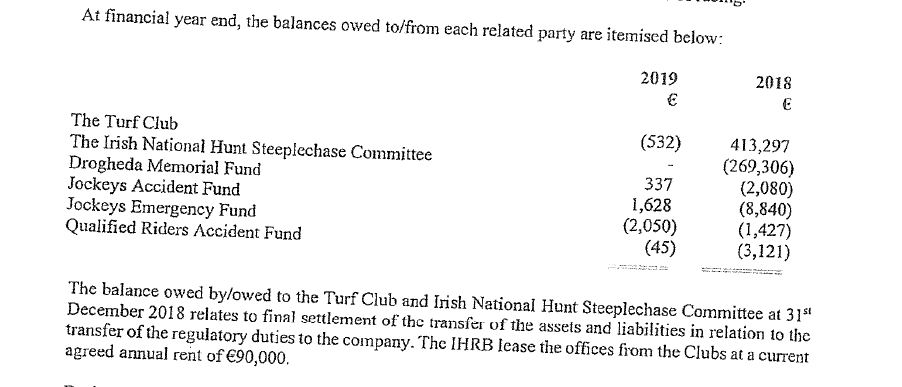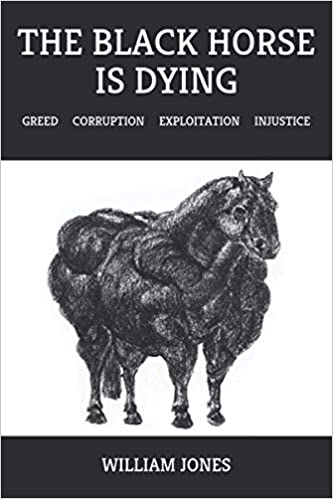In 2019, the IHRB introduced a 9 stroke limit on the jockey’s use of the whip. This year, they themselves are suffering a beating at the hands of their detractors . They have eventually posted their 2019 accounts and it seems they are intent on giving their detractors more sticks with which to batter their reputation…
- The missing €1.6 million:
Their 2018 accounts were incorrect by €1.6 million (in income and expenditure) and had to be restated…….You might want to reread that sentence… It seems extraordinary that an error of this magnitude was not noticed by anyone in the IHRB (or their previous auditors) . The Comptroller and Auditor General has come on board as auditor for these accounts and it would be interesting to know what the staff of the C&AG’s office made of such a material financial mis-statement in a previous set of accounts. The excerpt from the accounts is shown below…

Interestingly, the 2019 accounts were submitted to the CRO a number of weeks ago but then returned for unspecified reasons (but not seemingly the restatement issue).
2.Publicly funded salaries that are being kept secret
Despite being almost entirely dependent upon public funding, the IHRB are not disclosing salary details of senior staff. It is the norm in all public sector bodies (and all PLC’s in the private sector) that the salary of the CEO is disclosed. It is remarkable that the IHRB have been allowed to refuse to disclose this salary by the Dept of Agriculture. The stated reason is due to the ‘commercial sensitivity’ of the information. This is a complete nonsense given that the organisation does not operate in a commercial sphere and there are no competitor organisations to the IHRB. I have no beef with Denis Egan but as someone whose salary comes from the public purse it should be disclosed the same as other public servants. Not disclosing the salary obviously gives rise to concerns that the real sensitivity is the embarrassment it would cause. We already have a situation in which the soon to depart Brian Kavanagh is paid a salary of c €190,000 which is well in excess of the supposed salary range for that role. HRI’s budget is a multiple of IHRB’s, yet I suspect that the salary differential is minimal (if indeed it exists). The IHRB have also been granted a derogation on the requirement to even list the number of staff in each salary band for higher earning staff. Both of these derogations are unacceptable in any public body…An FOI request to the Dept of Agriculture on the lobbying around this derogation would be interesting…

3. The Turf Club (they haven’t gone away you know)
Another interesting element of the accounts is the relationship with the Turf Club. That private members club hasn’t gone away… In 2019, €90,000 was paid in rent and it would be interesting to know why and what was involved in the payments made to and from the Turf Club/INHS relating to the transfer of assets/liabilities (see note below)..

Final Word:
The question has to be asked if Irish racing needs two highly paid (overpaid?) Chief Executives who are funded from the public purse. The accounts of the IHRB show a €2.8 million spend on administration with 33 staff. Rather than attacking Jim Bolger, perhaps a question for the upcoming Dail Committee could be if we need two separate bodies each with their own payroll, accounts functions, legal functions etc ? Why not absorb the integrity function into HRI? The arguments to retain the IHRB became harder to sustain when they seem unwilling to let the taxpayer know what salaries they are paying themselves and when they couldn’t correctly account for what they claimed to spend…..
